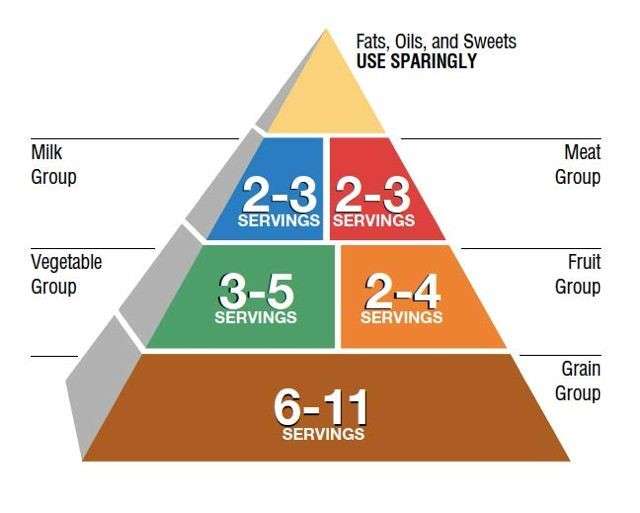
by Adam L Stanley | Oct 24, 2016 | Leadership, Technology
Technology leaders must think like Disruptors
A decade ago, the five most valuable companies on the S&P 500 were Exxon, GE, Microsoft, Gazprom, and Citigroup. Now? It’s Apple, Alphabet (Google), Amazon, Microsoft, and Facebook. Things change. And they change fast. And many technology leaders are not ready for it. In some ways, none of us are.
Amazon is maybe the ultimate disruptive company; it essentially ushered along a completely new way of thinking about commerce. But interestingly, before Amazon started there was another disrupter called Webvan. In 1999, myself and a group of fellow Wharton MBA students in an e-commerce course won a prize in a contest sponsored by Salomon Smith Barney. (There are so many elements of irony in this but I will save that for another blog.) Our topic? Webvan vs Albertsons: How e-commerce will disrupt brick and mortar grocers. Our conclusion was that the bricks would always be around to some extent but that everyone would become more comfortable with buying groceries online thanks to Webvan. We were right about some of that! More important at the time is that the now defunct brand sponsored our $1000 per team member prize!

 Perhaps the ultimate success of Amazon is the fact they learned from the mistakes of their Webvan predecessor. Webvan is the best example of a company that tried and failed at a bold attempt to disrupt a stodgy industry. It raised $375 million in its IPO, achieved a peak stock market value of $1.2 billion, then flamed out spectacularly before filing for bankruptcy in July 2001.
Perhaps the ultimate success of Amazon is the fact they learned from the mistakes of their Webvan predecessor. Webvan is the best example of a company that tried and failed at a bold attempt to disrupt a stodgy industry. It raised $375 million in its IPO, achieved a peak stock market value of $1.2 billion, then flamed out spectacularly before filing for bankruptcy in July 2001.
Facebook completely disrupted how we think about relationships and staying connected to friends and family. But before them there was MySpace. Google and Apple, in their own ways, did the same for accessing and sharing information. But they borrowed heavily from the playbooks, both winning and losing games, of Alta Vista, BlackBerry, and Apple 1.0 (remember Jobs was fired by Apple?)
 In my career, I’ve met plenty of leaders and managers — up through the executive level — who absolutely think disruption isn’t real, or won’t come for them. And I have met several techies and startup guys who are on their 10th attempt and think everything is ripe for disruption. They are both wrong to some extent. There are some industries that are just begging to be disrupted: real estate title companies and public education come to mind (sorry if the latter offends).There are certain industries that would be a little bit harder to disrupt. Airlines come to mind, because the cost of entry is massive. But … you could argue Southwest disrupted the airline industry to some extent. Their stock is still mostly hot, too.
In my career, I’ve met plenty of leaders and managers — up through the executive level — who absolutely think disruption isn’t real, or won’t come for them. And I have met several techies and startup guys who are on their 10th attempt and think everything is ripe for disruption. They are both wrong to some extent. There are some industries that are just begging to be disrupted: real estate title companies and public education come to mind (sorry if the latter offends).There are certain industries that would be a little bit harder to disrupt. Airlines come to mind, because the cost of entry is massive. But … you could argue Southwest disrupted the airline industry to some extent. Their stock is still mostly hot, too.
The reality is that anything CAN be disrupted. Mind blowing statistic for amateur corporate historians: 88% of the 1955 Fortune 500 doesn’t exist anymore. You can argue that 1955 was a long time ago and business models are obviously very different, and you’d be right — but you’d also be proving my point. To quote Varsity Blues, a B-movie that came out right around the time Webvan was imploding: “Things change, Mox.” We’re all candidates for disruption to some extent.
That is going to require a new way for technology leaders, CIOs, CTOs, and others with decision-making oversight to approach their day-to-day jobs. What might that look like? Here are six ways I see it shifting.
Scenario planning: We will constantly prepare for disruption or downturns by thinking through our potential reaction to certain market events. We’ve ideally been doing this for years, but too many CIOs are still spending part of their supposedly strategic time just putting out fires.
New business models. We must continue building a closer relationship with the business units. We can’t be seen as “IT” or “infrastructure.” It needs to be baked in. My current team is talking to as many external clients as we can, along with our colleagues, so that we better understand demand. We must continue to think about new ways of working and new business models for delivering services.
 Experimentation. We must be comfortable with taking risks and failing fast. We must try out new things and not be afraid of the possibility of experimenting and throwing away. The best unicorns started off as 10, 20, 30, or 150 failed ideas. If you want a good read on making (tons of) money despite massive failure at some points in the past, check this out from HBR.
Experimentation. We must be comfortable with taking risks and failing fast. We must try out new things and not be afraid of the possibility of experimenting and throwing away. The best unicorns started off as 10, 20, 30, or 150 failed ideas. If you want a good read on making (tons of) money despite massive failure at some points in the past, check this out from HBR.
New org model. We must cease the “us” versus “them” thinking that has corporate IT and the business operating as separate entities. We are partners driving value. It’s that simple. I disdain the use of the word “The Business” as “Clients” of IT. We are all colleagues working together to drive value for external customers and profitable growth for the company.
 Invest in talent. We must begin to compete for the software engineers, user experience designers, and innovators that are currently going to the startups and the more Innovative companies. In order for us to change we must invest in new talent as well as training our existing talent to think differently. This is hard for many technology executives who came up in a world where products and processes were paramount to people.
Invest in talent. We must begin to compete for the software engineers, user experience designers, and innovators that are currently going to the startups and the more Innovative companies. In order for us to change we must invest in new talent as well as training our existing talent to think differently. This is hard for many technology executives who came up in a world where products and processes were paramount to people.
What else would you add about how technology leaders in enterprise can think differently about potential disruptive forces?
Be well. Lead On.
Adam
Related Posts:
Disruption: Thinking like our ancestors
Riding a Wave of Change
Innovations Changing Our Industry

Adam L. Stanley Connections Blog
Technology. Leadership. Food. Life.
AdamLStanley.com
Follow me on Twitter | Connect with me on Linked In | “Like” me on Facebook
by Adam L Stanley | Oct 11, 2016 | Leadership, Technology
Having effective technology conversations
One of the biggest challenges for any technology leader these days is communicating. How do you discuss the value you are driving? Scorecards, dashboards, performance management, talk like a CEO, and on and on. How do you sell a new idea or service? Start with the business perspective, link to tangible EBITDA improvement, learn from consumer products. Lots of questions. Lots of blogs. But the most basic communication challenge is much more fundamental. And that is this: How do you think about technology?
 You’re the CIO and we pay you something greater than nothing annually to think about technology. So, how do you … well, think about technology? After all, more and better technology — think AI or machine learning — signals the beginning of scaled automation, which some say could one day replace 1 in 2 jobs globally. So you should have a point of view and a way to structure your thinking that makes it easy for me, the layman CEO, to understand today’s tech as well as how you think about disruption. If they haven’t said this to you, they are thinking it.
You’re the CIO and we pay you something greater than nothing annually to think about technology. So, how do you … well, think about technology? After all, more and better technology — think AI or machine learning — signals the beginning of scaled automation, which some say could one day replace 1 in 2 jobs globally. So you should have a point of view and a way to structure your thinking that makes it easy for me, the layman CEO, to understand today’s tech as well as how you think about disruption. If they haven’t said this to you, they are thinking it.
Too often, technology leaders replace legitimate conversations about technology — and how to think about and strategize around it — with a lot of buzzwords and process jargon that doesn’t really help leadership conceptualize the present state and the future state. I’m going to try to explain how I look at technology at the macro level. For those of you that work with me, you may recognize this from a Tech Talk for our Americas business. Proof that I practice what I blog and vice versa.
Four Strategic Focus Areas
For at least the last 15 years, I have started with four principles. They have changed somewhat over time but in general I find these are easy to understand and apply to all sorts of businesses, including different service lines within my current business. My strategic priorities are simply to continue to deliver value through these four drivers:
- Utility – A strong foundation for future growth, with scalable and stable core services
- Productivity – Enabling efficient service delivery for all of our colleagues, regardless of role
- Connectivity – Enabling the power of our large global platform to effectively service local market needs
- Insight – Driving business growth through strategic use of information in analytics
I sometimes think of these four elements as components of a balanced technology portfolio, akin to a food pyramid, but for technological adoption.
For those of you who do not have children or work in schools, here is the food pyramid, the US government’s recommendation for balanced food “portfolios”:

Note: the new food pyramid is clearly the result of some consulting team getting paid loads to take something very simply and make it bizarrely complex so I will simply ignore that one.
It’s critical that CIOs and other technology leaders move beyond the buzzwords to try to structure their thinking. Executives are busy people. They’re constantly pulled in a thousand different directions. That’s why you see studies like this one from MIT’s Sloan School of Management: basically, 67 percent of senior leaders can’t name the priorities of their org. That’s bad on surface, yes, but it’s also pretty logical. Senior leadership is a constant battle between these three forces:
- What needs to get done
- What you want to get done
- What would be nice to do
That plays out in tech and tech adoption more than anywhere. That’s why you need some kind of rubric, concept, or way of thinking to escalate up the chain.
Back to my four areas.
Utility
 Utility is the base level — akin to breads, cereals, rice, and pastas. Here, you get the basics right. You build a strong foundation for future growth. The key in the utility stage — which is going to take you a bit of time; more on that in one second — is stable but also scalable core services. Runners know they need carbs to gain energy necessary to push their muscles and finish the race. Likewise, without the Utility level of technology (your “grains”), you cannot grow your business. The network may be boring, but it’s the only thing connecting each of your offices, factories, and teams.
Utility is the base level — akin to breads, cereals, rice, and pastas. Here, you get the basics right. You build a strong foundation for future growth. The key in the utility stage — which is going to take you a bit of time; more on that in one second — is stable but also scalable core services. Runners know they need carbs to gain energy necessary to push their muscles and finish the race. Likewise, without the Utility level of technology (your “grains”), you cannot grow your business. The network may be boring, but it’s the only thing connecting each of your offices, factories, and teams.
Here is something people often forget: You can INNOVATE within the utility layer. When I was a kid, most children ate plain old white bread. Now, they eat gluten free this, multi-grain that, and the bread aisle has dozens of choices. The basics have gotten better for you. Likewise, utility services must also continue to improve. We are moving to SD-WAN in our network space and away from traditional network architecture. We are using cloud storage solutions to replace file shares. Innovation at this level produces cost efficiencies and a stronger foundation. So, contrary to those who talk about “plumbing”, people or partners in this space are critical to your technology organization.
Productivity
 Productivity is how you begin building on utility. This means that, regardless of role, there needs to be effective service delivery. How do you build and improve tools that enhance our ability to execute our business? This is not just about collaboration tools, and is not the same as plumbing. This could include robots that automate cleaning bathrooms or presentation tools that generate dynamic reports with fewer hours required by graphic designers.
Productivity is how you begin building on utility. This means that, regardless of role, there needs to be effective service delivery. How do you build and improve tools that enhance our ability to execute our business? This is not just about collaboration tools, and is not the same as plumbing. This could include robots that automate cleaning bathrooms or presentation tools that generate dynamic reports with fewer hours required by graphic designers.
Manufacturing businesses constantly work on productivity and it is a major focus. But often professional services firms focus exclusively on “knowledge worker” productivity. In addition to the fact that I find that term completely offensive (maybe I’m too PC in thinking that implies other workers are not knowledgeable), it limits thinking. Productivity for Finance professionals can be generated by implementing cloud based, mobile friendly financial management and reporting tools like Workday. For a business development team, its effective client data management and presentations tools. For a janitor or engineer, it means service task management, or easy access to instructions for repeatable work.
And, yes, there is LOADS of innovation in this space. Get the pattern? You can innovate everywhere but you do need to think about the end goal. And in this layer of the “food pyramid”, you’ve got to get your fruits and veggies. You have to allow your people to better do their jobs.
Connectivity
 Connectivity is when you start moving to really grow the business through technology. “Milk: It does a body good” was the old slogan when I was a kid. It is great for growth, strong bones, and good teeth. Meat likewise gives you protein that helps build muscle mass. Likewise, connectivity is where you truly start to leverage technology to grow.
Connectivity is when you start moving to really grow the business through technology. “Milk: It does a body good” was the old slogan when I was a kid. It is great for growth, strong bones, and good teeth. Meat likewise gives you protein that helps build muscle mass. Likewise, connectivity is where you truly start to leverage technology to grow.
You have this large global business, but you want it to effectively meet local market needs. In the connectivity space we must make it easier for colleagues to share knowledge, find the right expert wherever they might be in the company, and create a richer experience with which you can connect with your clients. My blog is called Connections and the heart of this stage is connections. In my blog “Make Life Connections instead of networking”, I discuss the power of a network. Harnessing the intelligence and experience of the best people is critical for any business and in this stage we look for ways to more effective make these value driving connections.
Insight
 Finally, you get to insight. This is the “sweets and oils” section of my technological adoption pyramid. The difference in metaphor? Sweets and oils should be used sparingly, but … insight, which is all about driving business growth through advanced analytics, should be used consistently but ONLY once your business can arrive at this stage.
Finally, you get to insight. This is the “sweets and oils” section of my technological adoption pyramid. The difference in metaphor? Sweets and oils should be used sparingly, but … insight, which is all about driving business growth through advanced analytics, should be used consistently but ONLY once your business can arrive at this stage.
Dominic Barton, one of the global heads of McKinsey, has outlined something similar for the next 10-20 years of business. Analytics — using information as a competitive advantage — is still one of the cornerstones, but herein lies a problem.
Many companies try to jump all the way to the advanced analytics stage of this four-step model. They waste millions building massive “data lakes”, hiring data scientists, and celebrating “Big Data”. You absolutely cannot do that. Some businesses feel they can’t wait that long, but that’s a mistake. If you try to jump all the way to advanced analytics without the basics in place, a number of problems can result:
- You’re capturing the wrong intel
- You don’t have the right people to help analyze and present on it
- The data is duplicated or not scrubbed
- The pursuit of data is harming day-to-day technological needs
“Waiting patiently” is not a currency of most modern business, but in this case it’s all about moving through the steps in a logical way as opposed to rushing to where the revenue might be. When you try to hit the revenue stages too fast, many other functionalities can crumble around that pursuit. Like the food pyramid, if you eat too many sweets without your fruits, veggies, and grains, you may be fat and happy for a little while. But eventually, you are not healthy and begin to suffer.
Moving beyond the pyramid
Now, in the next post I do, I’m going to talk a little bit about disruption and how wrong a lot of us are in our thinking there. Disruption is very real — we get calls from dozens of startups every day trying to offer us services that we didn’t know we needed. But while disruption is real, our approaches to it (how to beat it back, embrace it, or drive it ourselves ) are hackneyed, old thinking. But that’s for the next post.
For now, I’m curious to hear: do you have ways that you think about technology and adoption cycles internally? I’m less about the cute acronyms and more about bringing along the most people possible to the mission and methodology. What say you?
Be well. Lead On.
Adam
Related Posts:
The Power of Authenticity
Investing in talent for the long-term
Peer accountability is critical to success in teams

Adam L. Stanley Connections Blog
Technology. Leadership. Food. Life.
AdamLStanley.com
Follow me on Twitter | Connect with me on Linked In | “Like” me on Facebook

by Adam L Stanley | May 6, 2016 | Leadership, Relationships, Technology
Don’t ask for a seat at the table. Claim it!
Stop it. Just stop.
10 years ago, when IT was still an enabling function for most companies, you’d attend trade shows and conferences and there were seemingly endless discussions about “getting a seat at the table.”
Five years ago, this conversation was relevant for many companies that were recognizing the importance of technology to the business — but still not believing CIOs could actually drive the change.
Today, more and more I meet CIOs that are business leaders and run IT. This is a good thing!
But the next step is crucial. Now we need more CIOs and their direct reports claiming their seat at the table so that companies can do more internal promotion and less external recruitment.

But many CIO-chain reports still don’t know how to claim that seat at the business decision-making table. And my soapbox is for these leaders.
The short version: If you want to be relevant, you must be relevant. Do you know the business deeply and are you clear on the key things you can do to grow revenue, improve profitability and drive results? Make sure you do before you try to pull up a chair at the table!
Here are a few tips for those trying to claim their seat:
Stop trying to be the controller and be a partner
A “corporate IT” function focuses too much on rules and restrictions. It’s where business process can often bury actual business results. It doesn’t ask good business questions, and it tells business leaders what they must do, not how they could do. This leads to business leaders consulting with IT only when they have to, and not when they want to discuss strategy.
How to fix: Go watch HBO’s Silicon Valley Season 3, Episode 2 for a laugh about how “IT guys” talk to “sales guys.” Then come back here and realize this: hardcore business decision-makers want conversations and presentations in terms of actionable results — and they want them in their vocabulary, not yours. If you want a seat at the table, start by thinking about your limitations process-wise. Then invert those limitations into what can be done and re-focus your presentation ideas that way. No executive wants to hear a bunch of process tech-speak about neural nets or back-ends. They don’t really care. They want to know how results will be achieved. So you need to provide that context. That’s partnership, instead of a roadblock. Roadblocks don’t typically get the seat at the table.
Have a point of view
In line with the above, one of the potential reasons for my success getting to the table may be the fact that I frankly don’t know all that much about the details of technology. Please don’t ask me how to build a server or write code. There are so many people who know much more than I ever will. That is ok. Leadership isn’t about knowing everything; many managers miss this point. Leadership is about knowing how to drive decisions and results, and who to engage on each topic that is the subject matter expert there.
How to fix: Have a point of view about how technology drives value for your business, helps you engage with clients and colleagues, and wins work. Bring to the table your perspective of how technology is changing your industry.
Know the business and speak the language of the business
I often joke with my teams that every one of my colleagues I meet in the hall has a figure above their head. The figure represents the particular contribution to EBITDA of their service line or division. In order to effectively communicate your contributions, you must be able to make your argument in business terms — not in technology terms– quantifying the value of your proposed involvement in fulfilling the company’s strategy.
How to fix: Understand the mission of your company, but also understand the two sides of strategy. What do I mean by that? There’s a “big speeches” strategy, where a CEO tends to speak in aspirational words and concepts. That’s for public consumption, the media, and regular employees. Then there’s the strategy the CEO discusses with his/her top lieutenants, which tends to be more specific and focused. You need to understand both sides, because you need the aspirational terminology — that vets you to be a major leader and outwardly face new groups of people — but you also need to know the real deal from the closed door meetings. We talk about “code-switching” in society a lot, and it’s crucial in business. You need to be able to quickly switch back and forth from PR-facing top leader to organizational execution internally. They are different languages.
Sell the business
Never forget that every employee of any company must focus on the end customer. Every one. So, maximize every chance you have to tell someone about the company, its products or services. Try to seek out mentors amongst the business development or client account teams that can teach you how to sell the story. Your first job is to run technology, but wouldn’t it be great if a dinner conversation at a charity event you attended led to a new client?
How to fix: This one is blunt, but simple. If you want the seat at the table or the higher salary, you have to sell or be tied to the bigger clients or deals. Those are the people that get the seats first and keep them in most companies. You can make arguments that it shouldn’t be that way, but it is — and will be for a long while still.
 Be social
Be social
Business is inherently a social enterprise. Relationships are built over coffee, drinks, and being in the trenches during critical projects or incidents. Because you are in technology, you will spend much of your time in the trenches with other technologists. That is great. Getting to know your teams is important. But be sure to spend some time with the colleagues in the business. Be sure there is balance as you don’t want them to think you are just the party guy or the smoozer!
How to fix: Become comfortable with ideas opposite from your own and stop spending time with people just like yourself. The more relationships you build, the closer to the power vortex you can get.
Claim your seat today.
You’ve tried to communicate the value you bring to the company, but executives at your company just don’t get it? Speak Up. Challenge yourself to be more social, to get to better know the business, to sell the business. Have a point of view and make it known. Don’t ask for a seat at the table. Claim it!
Always remember: Business leadership tends to be driven by measurement, value, and relationships. If you understand your value and the corporate value prop, that’s Step 1. Great. If you understand measurement as a whole and how your company tracks and measures goals and KPIs, that’s Step 2. Awesome. If you invest time in building relationships in and out of work — hitting goals, but also networking and schmoozing and putting yourself in front of the key stakeholders — that’s Step 3. Now you’re ready to claim a seat at the table.
As always, I would love to hear your thoughts.
Be well. Lead On.
Adam
Related Posts:
Defining the Perfect Employee – Top Traits Series
Trait 1: Hard working AND talented
Trait 2: Pride in work product
Trait 3: Fun to work with
Investing in talent for the long-term

Adam L. Stanley Connections Blog
Technology. Leadership. Food. Life.
AdamLStanley.com
Follow me on Twitter | Connect with me on Linked In | “Like” me on Facebook
by Adam L Stanley | Nov 16, 2015 | Leadership, Technology

“So you think you can dance?”
Recently, I had a conversation with a former colleague who is about to embark on a new journey in his second role as a CIO. I had a separate conversation with someone who is contemplating making the rise towards the role. I realize that overtime I’ve had lots and lots of conversations and I’ve also met some stellar leaders and some not so stellar. I am still a work in progress and enjoying the journey of everyday trying to become a better leader, better business executive, and a better CIO. I wanted to post a quick list on what I think are some of the critical skills for a CIO.
Five core skills every CIO must continually improve
Of course, there are dozens of items I could include. However, here are the top five in my opinion:
1) RELATIONSHIPS – You have to be able to deal with and be accepted by people in various groups. Expect that in a typical week, you might have a meeting with a peer about a failing project, with vendors to negotiate a contact, with your CFO to review budget, to an external sales call with a client, to a strategic conversation with your CEO, to handling a sensitive issue with an employee. Each relationship is different and requires an ability to adjust your style while remaining authentic.
(See my prior posts on relationships. )
2) FINANCIAL ACUMEN – Master your budget. Know where you’re on target and where you have options to better manage. Don’t depend solely on the Finance function. They may provide you the numbers and the insight, but you get fired or rewarded for results. The temptation of mini technology liters is to spend a lot of time with their infrastructure team and their developers but then to forsake time with the finance leadership. That is a fatal mistake.
3) BUSINESS ACUMEN – you must know the business almost as much as the business development and sales teams. The risk of not working hard to know the businss is being left out of important calls. Or worse, you get invited to “the table”, but only acknowkedged when discussing specific technology issues. If not careful, you will get relegated to corporate stuff and controls.
4) LEADERSHIP – As anyone in the field will know, IT can be thankless. You rarely get calls when things go well, but let the ish hit the fan and your voicemail box is full. Your team needs inspiration and encouragement without pandering or coddling. Tough love that holds them accountable but allows for fast failure and supported recovery. You must have your Henry V moments on St Crispins Day, but also your Harry Potter vs Voldemort one on one battles where you are leading by example. Firm but fair leadership when you are also under pressure can be incredibly tough.
5) HUMILITY – no matter how hard you try, from time to time you will find yourself doing stuff that is “beneath you”. If I had a dollar everytime the entire room looked at me when a PC wasn’t able to connect to the projector, or the CEOs iPhone wasn’t working, I could at least buy a nice dinner or so package. Like it or not, if you have technology in your title, Wharton MBA or otherwise, you will at some point be asked to fix the meeting presentation system in a meeting with the Executive Committee. And you will have to graciously ignore the fact that Joe D. Salesman simply didn’t know how to hit page down to advance his slides.
Being a CIO can be one of the most rewarding, challenging, and exciting opportunities in your corporate career. You will meet amazing people, network amongst technology visionaries as well as business leaders, and drive significant transformation in your company. It can also be highly frustrating and boy will you be tired. A lot. However, continually working on these particular skills will make you and your company more succesful.
What are some expectations you have of your CIO (or, if you are the CIO, of yourself) and does he or she live up to those expectations? What skills would you add to my list?
Be well. Lead On.
Adam
Related Posts:
Who Am I?
Expectations of Leaders at all Levels
Khalil Gibran on Leadership
Lessons from Henry V

Adam Stanley
Adam L. Stanley Connections Blog
Technology. Leadership. Food. Life.
AdamLStanley.com
Follow me on Twitter | Connect with me on Linked In | “Like” me on Facebook
by Adam L Stanley | Jul 2, 2015 | Technology
Real Estate Technology: Riding a wave of change
 Kodak missed a tipping point and went bankrupt. Blockbuster Video fought the wrong enemy and went bankrupt. Taxi drivers, hotels, travel agencies, and so many other industries are now fighting less against themselves than against new entrants that actually seek to solve a problem, to fill a need, to change old norms. Perhaps more so than most of these industries, the commercial real estate industry has been slow to both recognize and embrace change. I am convinced messenger service companies remain in business solely because the CRE industry continues to mistrust the transmittal of critical documents to anyone or anything not human!
Kodak missed a tipping point and went bankrupt. Blockbuster Video fought the wrong enemy and went bankrupt. Taxi drivers, hotels, travel agencies, and so many other industries are now fighting less against themselves than against new entrants that actually seek to solve a problem, to fill a need, to change old norms. Perhaps more so than most of these industries, the commercial real estate industry has been slow to both recognize and embrace change. I am convinced messenger service companies remain in business solely because the CRE industry continues to mistrust the transmittal of critical documents to anyone or anything not human!
But that is changing, and it is changing fast. The next big thing for our industry, if we are not careful, will happen without the industry’s current players. And the industry is finally waking up. The influx of tech-dependent Millennials into the workforce, combined with increasing pressure to streamline communication and access to information, has made inroads into the business practices of even old-school brokers and traditional owners and investors. They have begun to recognize the importance of innovation beyond just the in-house research listings database and better presentation tools to both new business development and current client service.
As a result, attention (and, therefore, funds) devoted to technology for commercial real estate have skyrocketed. Company-sponsored competitions between internal groups complement existing IT resources in the quest for innovative ideas, while former real estate professionals, now tech innovators, are filling known informational and service gaps with external all-in-one marketing, database or analytics platforms, digital mapping and other architectural applications, and automated building management systems. Beyond that, we are finding more players from outside of the industry finding ways their tools and technology solutions can meet our needs. And much of the activity is being driven by incubators and accelerators like 1871 in Chicago, MetaProp in New York, and new players like Motives in Dallas.
I use this space to talk about leadership and trends in technology. I will talk more specifically about real estate technology over the next few months and will likely have guest bloggers from a few startups as well.
Thanks for continuing to connect with me.
Other related blog posts:
Thinking Like Our Ancestors
Excerpt: At the end of the day, perhaps disruption is a lot more simple than we make it seem at these mega conferences like OpenWorld. Perhaps disruption is simply a relentless focus on consumers: your clients, employees and investors. Dream every night of how you can better meet their needs and there is no way you can NOT disrupt your industry. Perhaps the only way you will get left behind is if you leave your consumers behind. Perhaps disruption is simply about a return to the past.
Facebook, Snapchat, and the new new thing
Excerpt: The bottom line is I don’t necessarily believe the Facebook is in its final days. I do believe, however, the company must drastically rethink their strategy and consider alternatives for growth in the United States. If they truly believe that growth in other markets will counter dramatic drops in USA, I believe that is misguided. Other markets will eventually follow the same path of the United States. Younger users will leave; older users will join the platform at a much lower level of engagement; upstarts will create the next next big thing and advertisers will be tempted away.
Innovations Changing Our Industry
Excerpt: In the interview, I discuss the rapid pace of technological changes in commercial real estate; the use of virtual reality for viewing property; DTZ’s use of analytics to help clients make smarter decisions; as well as the future potential for drones and the Internet of Things.
Be Well. Lead On.
Adam

Adam L. Stanley Connections Blog
Technology. Leadership. Food. Life.
AdamLStanley.com
Follow me on Twitter | Connect with me on Linked In | “Like” me on Facebook


 Perhaps the ultimate success of Amazon is the fact they learned from the mistakes of their Webvan predecessor. Webvan is the best example of a company that tried and failed at a bold attempt to disrupt a stodgy industry. It raised $375 million in its IPO, achieved a peak stock market value of $1.2 billion, then flamed out spectacularly before filing for bankruptcy in July 2001.
Perhaps the ultimate success of Amazon is the fact they learned from the mistakes of their Webvan predecessor. Webvan is the best example of a company that tried and failed at a bold attempt to disrupt a stodgy industry. It raised $375 million in its IPO, achieved a peak stock market value of $1.2 billion, then flamed out spectacularly before filing for bankruptcy in July 2001. In my career, I’ve met plenty of leaders and managers — up through the executive level — who absolutely think disruption isn’t real, or won’t come for them. And I have met several techies and startup guys who are on their 10th attempt and think everything is ripe for disruption. They are both wrong to some extent. There are some industries that are just begging to be disrupted: real estate title companies and public education come to mind (sorry if the latter offends).There are certain industries that would be a little bit harder to disrupt. Airlines come to mind, because the cost of entry is massive. But … you could argue Southwest disrupted the airline industry to some extent. Their stock is still mostly hot, too.
In my career, I’ve met plenty of leaders and managers — up through the executive level — who absolutely think disruption isn’t real, or won’t come for them. And I have met several techies and startup guys who are on their 10th attempt and think everything is ripe for disruption. They are both wrong to some extent. There are some industries that are just begging to be disrupted: real estate title companies and public education come to mind (sorry if the latter offends).There are certain industries that would be a little bit harder to disrupt. Airlines come to mind, because the cost of entry is massive. But … you could argue Southwest disrupted the airline industry to some extent. Their stock is still mostly hot, too. Experimentation. We must be comfortable with taking risks and failing fast. We must try out new things and not be afraid of the possibility of experimenting and throwing away. The best unicorns started off as 10, 20, 30, or 150 failed ideas. If you want a good read on making (tons of) money despite massive failure at some points in the past, check this out from HBR.
Experimentation. We must be comfortable with taking risks and failing fast. We must try out new things and not be afraid of the possibility of experimenting and throwing away. The best unicorns started off as 10, 20, 30, or 150 failed ideas. If you want a good read on making (tons of) money despite massive failure at some points in the past, check this out from HBR. Invest in talent. We must begin to compete for the software engineers, user experience designers, and innovators that are currently going to the startups and the more Innovative companies. In order for us to change we must invest in new talent as well as training our existing talent to think differently. This is hard for many technology executives who came up in a world where products and processes were paramount to people.
Invest in talent. We must begin to compete for the software engineers, user experience designers, and innovators that are currently going to the startups and the more Innovative companies. In order for us to change we must invest in new talent as well as training our existing talent to think differently. This is hard for many technology executives who came up in a world where products and processes were paramount to people.

 You’re the CIO and we pay you something greater than nothing annually to think about technology. So, how do you … well, think about technology? After all, more and better technology — think AI or machine learning — signals the beginning of scaled automation, which some say could one day replace 1 in 2 jobs globally. So you should have a point of view and a way to structure your thinking that makes it easy for me, the layman CEO, to understand today’s tech as well as how you think about disruption. If they haven’t said this to you, they are thinking it.
You’re the CIO and we pay you something greater than nothing annually to think about technology. So, how do you … well, think about technology? After all, more and better technology — think AI or machine learning — signals the beginning of scaled automation, which some say could one day replace 1 in 2 jobs globally. So you should have a point of view and a way to structure your thinking that makes it easy for me, the layman CEO, to understand today’s tech as well as how you think about disruption. If they haven’t said this to you, they are thinking it.
 Utility is the base level — akin to breads, cereals, rice, and pastas. Here, you get the basics right. You build a strong foundation for future growth. The key in the utility stage — which is going to take you a bit of time; more on that in one second — is stable but also scalable core services. Runners know they need carbs to gain energy necessary to push their muscles and finish the race. Likewise, without the Utility level of technology (your “grains”), you cannot grow your business. The network may be boring, but it’s the only thing connecting each of your offices, factories, and teams.
Utility is the base level — akin to breads, cereals, rice, and pastas. Here, you get the basics right. You build a strong foundation for future growth. The key in the utility stage — which is going to take you a bit of time; more on that in one second — is stable but also scalable core services. Runners know they need carbs to gain energy necessary to push their muscles and finish the race. Likewise, without the Utility level of technology (your “grains”), you cannot grow your business. The network may be boring, but it’s the only thing connecting each of your offices, factories, and teams. Productivity is how you begin building on utility. This means that, regardless of role, there needs to be effective service delivery. How do you build and improve tools that enhance our ability to execute our business? This is not just about collaboration tools, and is not the same as plumbing. This could include robots that automate cleaning bathrooms or presentation tools that generate dynamic reports with fewer hours required by graphic designers.
Productivity is how you begin building on utility. This means that, regardless of role, there needs to be effective service delivery. How do you build and improve tools that enhance our ability to execute our business? This is not just about collaboration tools, and is not the same as plumbing. This could include robots that automate cleaning bathrooms or presentation tools that generate dynamic reports with fewer hours required by graphic designers. Connectivity is when you start moving to really grow the business through technology. “Milk: It does a body good” was the old slogan when I was a kid. It is great for growth, strong bones, and good teeth. Meat likewise gives you protein that helps build muscle mass. Likewise, connectivity is where you truly start to leverage technology to grow.
Connectivity is when you start moving to really grow the business through technology. “Milk: It does a body good” was the old slogan when I was a kid. It is great for growth, strong bones, and good teeth. Meat likewise gives you protein that helps build muscle mass. Likewise, connectivity is where you truly start to leverage technology to grow. Finally, you get to insight. This is the “sweets and oils” section of my technological adoption pyramid. The difference in metaphor? Sweets and oils should be used sparingly, but … insight, which is all about driving business growth through advanced analytics, should be used consistently but ONLY once your business can arrive at this stage.
Finally, you get to insight. This is the “sweets and oils” section of my technological adoption pyramid. The difference in metaphor? Sweets and oils should be used sparingly, but … insight, which is all about driving business growth through advanced analytics, should be used consistently but ONLY once your business can arrive at this stage.


 Be social
Be social


 Kodak missed a tipping point and went bankrupt. Blockbuster Video fought the wrong enemy and went bankrupt. Taxi drivers, hotels, travel agencies, and so many other industries are now fighting less against themselves than against new entrants that actually seek to solve a problem, to fill a need, to change old norms. Perhaps more so than most of these industries, the commercial real estate industry has been slow to both recognize and embrace change. I am convinced messenger service companies remain in business solely because the CRE industry continues to mistrust the transmittal of critical documents to anyone or anything not human!
Kodak missed a tipping point and went bankrupt. Blockbuster Video fought the wrong enemy and went bankrupt. Taxi drivers, hotels, travel agencies, and so many other industries are now fighting less against themselves than against new entrants that actually seek to solve a problem, to fill a need, to change old norms. Perhaps more so than most of these industries, the commercial real estate industry has been slow to both recognize and embrace change. I am convinced messenger service companies remain in business solely because the CRE industry continues to mistrust the transmittal of critical documents to anyone or anything not human!